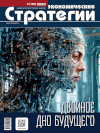Solidarism or Distributism? On Domestic Concept of the Solidary Economy
DOI: 10.33917/es-1.193.2024.76-81
Recently, the concept of society, which, according to the characteristics of its authors, is an alternative to both socialism and capitalism, has become quite actively discussed in Russia. Some of them do not consider it shameful to use the concept of “solidarism” to describe it, while others, on the contrary, actively distance themselves off it, preferring to call their doctrine a solidary society and economy.
No matter how surprising it may seem at first glance, the set of views expressed by modern domestic solidarists had foreign predecessors and modern supporters in the person of the so-called distributists.
References:
1. Koshkin V.I., Kretov S.I. Osnovy politicheskoy ekonomii solidarizma [Foundations of the Political Economy of Solidarism]. Moscow, LENAND 2017.
2. Belyaev S., Koshkin V. Mozhet li ekonomika byt’ solidarnoy? Chast’ 1 [Can the Economy be Solidary? Part 1]. Ekspert, 2020, no 14, pp. 66–71.
3. Belyaev S. Retsept ot bednosti: vvesti sobstvennost’ rossiyan na vse prirodnye resursy. Kak preodolet’ vopiyushchee neravenstvo [The Recipe for Poverty: Introduce Russian Ownership of all Natural Resources. How to Overcome Gross Inequality]. Moskovskiy komsomolets, 2021, 20 maya, available at: https://www.mk.ru/economics/2021/05/20/recept-ot-bednosti-vvesti-sobstvennost-rossiyan-na-vse-prirodnye-resursy.html
4. Koshkin V.I., Kretov S.I. Solidarnaya ekonomika: Put’ v budushchee [Solidarity Economy: The Way to the Future]. Moscow, LENAND, 2018.
5. Belyaev S., Koshkin V. Mozhet li ekonomika byt’ solidarnoy? Chast’ 2 [Can the Economy be Solidary? Part 2]. Ekspert, 2020, no 15–16, pp. 38–43.
6. Belloc H. Essays of a Catholic. N.Y. Books for Librarian Press, 1967.
7. Chesterton G.K. The Outline of Sanity. Leipzig, Bernard Tauchnitz, 1927.
8. Duboin J. La Grande Relève des Hommes par la Machine. Paris, Editions nouvelles,1932.
9. Bellami E. Cherez sto let: Sobr. soch.: V°2 t. [After a hundred years: Collected Works: In 2 vol.]. Vol. 1. Moscow, Knizhnyy mir, Knigovek, 2018.
10. Laudrain M. La vie Française du socialisme. Paris, La Maison du Livre Français, 1963.














